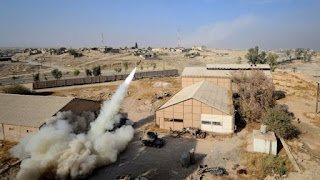The only son of Selim I, Suleyman I was born on November 6th 1494 at Trabzon (Black Sea coast of Turkey). At the age of 26 he became the 10th sultan of the Empire in 1520 and is known as "Kanuni", the Lawgiver, in his homeland, but for Europeans he has always been "Suleyman the Magnificent". During the course of his substantial extension of the Ottoman Empire he captured Belgrade in 1521 and Rhodes 1522, forcing the Knights of St. John to leave for Malta, defeated and killed King Lewis of Hungary at Mohacs in 1526, taking Buda (Budin) in 1529 and unsuccessfully besieging Vienna in September and October of that year, and Transylvania came into his possession in 1562. His domain extended far to the eastward and into Egypt and Persia, while his fleet was master of the Red Sea (including Yemen and Aden) and virtually the whole of the Mediterranean, waging war on the coasts of North Africa, Italy and Dalmatia under the command of its fearsome admiral Barbarossa.
Within the Empire Süleyman was responsible for transforming the army and the judicial system. Süleyman himself was a poet and accomplished goldsmith. Suleyman died on September 6th 1566 during the war with Austria outside Szigetvar in Hungary led by his Grand Vizier Sokollu Mehmed Pasha, which two days later fell to the Ottomans. During the siege, Austrian army didn't come to help the Hungarians so they had to defend their castle heroically but desperately. After Suleyman's death, he was taken back to Istanbul and was buried in the largest of Sinan's mausoleum situated within the complex of the Suleymaniye Mosque.
Suleyman the Magnificent ruled the Ottoman Empire for 46 years between 1520 - 1566 and doubled his territory. This was a rising period for Istanbul, as it was for the whole Empire. Many valuable buildings were constructed during this period which survived until our days with no or little damage thanks to the great architect Sinan. The city was restored with a better plan including new dams, aqueducts and fountains, theological schools (medrese), caravanserai, Turkish baths, botanical gardens and bridges. The port of Golden Horn, of which the surveillance was made from Galata Tower, became one of the busiest ports. Some of the important monuments and mosques built during this period are: Suleymaniye Mosque and annexes, Sehzadebasi Mosque and establishments, Sultan Selim Mosque and establishments, Cihangir Mosque and Haseki establishments and baths built on behalf of the Hurrem Sultan (the only loved wife of the Sultan).
Istanbul had a detailed city plan for reconstruction during this time. Migration was prohibited. Building houses around the city wall was prohibited. Coffee houses were introduced to Istanbul during this period.
He was succeeded by his son Selim II.
Hurrem Sultan (Roxelane)
Wife of Suleyman, The Magnificent (ca 1558). One of the most outstanding examples of powerful women in the Ottoman Empire, Hurrem initiated the era of the "Sultanate of Women".
Like other members of the Harem from which she rose to power, Hurrem was originally a foreign girl, named Aleksandra Lisowska, born in Rohatyn city of the Kingdom of Poland back then which is in Ukraine today. She was abducted as a slave girl after one of Suleyman's expeditions in the 1520's. Soon after she entered the Harem, she routed her competition for Suleyman's affections, and persuaded him to marry, after which her influence grew increasingly. Her son Selim (The Sot), became the next Sultan, one of the Ottoman Empire's worst. Some have even speculated the Selim sprang not from Suleyman's loins, but from a passionate indiscretion on the part of the Hurrem. Besides Selim, she mothered three children who survived to adulthood; Bayezid (son), Mihrimah (daughter), and another son Cihangir (who was physically handicapped, which prohibited his ascension to the throne by law).
When she died in 1558, she was buried in a large mausoleum next to her husband in the Suleymaniye Mosque complex in Istanbul.
Mihrimah Sultan
The only daughter of Sultan Suleyman the Magnificent by Hurrem Sultan, she was born around 1522. Suleyman adored his daughter, and complained with her every wish. Mihrimah Sultan was well educated. She married Rustem Pasha, Governor of Diyarbakir, who was shortly afterwards appointed as Grand Vizier. According to the Ottoman historians, Hurrem, Mihrimah and Rustem Pasha conspired to bring about the death of Sehzade (prince) Mustafa, who stood in the way of Mihrimah Sultan's influence over her father. Indeed her letters and other sources demonstrate that she took over her mother's tomb in Suleymaniye in Istanbul.
The fact that Mihrimah encouraged her father to launch the campaign against Malta, promising to build 400 galleys at her own expense; that like her mother she wrote letters to the King of Poland; and that on her father's death she lent 50.000 gold sovereigns to Sultan Selim to meet his immediate needs, illustrate the political power which she wielded. She possessed a vast fortune, and the complex which master architect Sinan built for her on the waterfront at Uskudar (Scutari) between 1540-48 is one of Istanbul's foremost monuments and is a reflection of her charitable personality. The complex originally consisted of a mosque, medresse (theological school), primary school, mental hospital, and imaret, but the latter two buildings are not standing today. Mihrimah Sultan also had a palace built for herself near the complex in Uskudar. Another mosque built for Mihrimah Sultan again by architect Sinan at Edirnekapi district of Istanbul represents the culmination of Ottoman single-domed mosques. With its abundant windows and graceful decoration, this mosque is reminiscent of a palace or kiosk (pavilion). A fountain, medresse and hammam (Turkish Bath) complete this mosque's complex. Another of Mihrimah's social works was for repairs to the Ayn Zubayda water system at Mecca, its extension into the city, and the construction of cisterns and reservoirs. Her power and influence make Mihrimah Sultan the most famous and powerful of all Ottoman princesses.
Source : http://www.allaboutturkey.com/suleyman.htm





